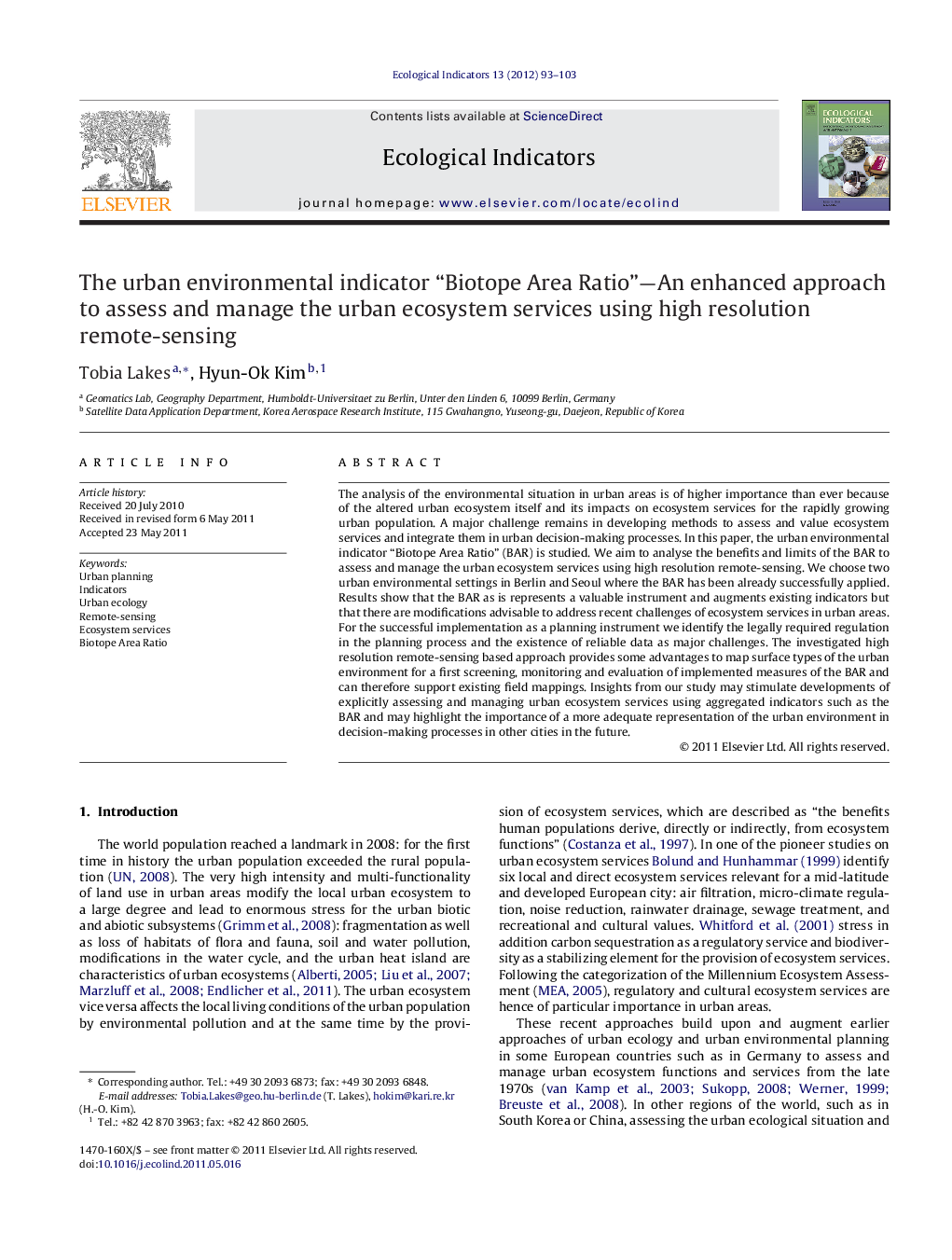| Article ID | Journal | Published Year | Pages | File Type |
|---|---|---|---|---|
| 4374003 | Ecological Indicators | 2012 | 11 Pages |
The analysis of the environmental situation in urban areas is of higher importance than ever because of the altered urban ecosystem itself and its impacts on ecosystem services for the rapidly growing urban population. A major challenge remains in developing methods to assess and value ecosystem services and integrate them in urban decision-making processes. In this paper, the urban environmental indicator “Biotope Area Ratio” (BAR) is studied. We aim to analyse the benefits and limits of the BAR to assess and manage the urban ecosystem services using high resolution remote-sensing. We choose two urban environmental settings in Berlin and Seoul where the BAR has been already successfully applied. Results show that the BAR as is represents a valuable instrument and augments existing indicators but that there are modifications advisable to address recent challenges of ecosystem services in urban areas. For the successful implementation as a planning instrument we identify the legally required regulation in the planning process and the existence of reliable data as major challenges. The investigated high resolution remote-sensing based approach provides some advantages to map surface types of the urban environment for a first screening, monitoring and evaluation of implemented measures of the BAR and can therefore support existing field mappings. Insights from our study may stimulate developments of explicitly assessing and managing urban ecosystem services using aggregated indicators such as the BAR and may highlight the importance of a more adequate representation of the urban environment in decision-making processes in other cities in the future.
